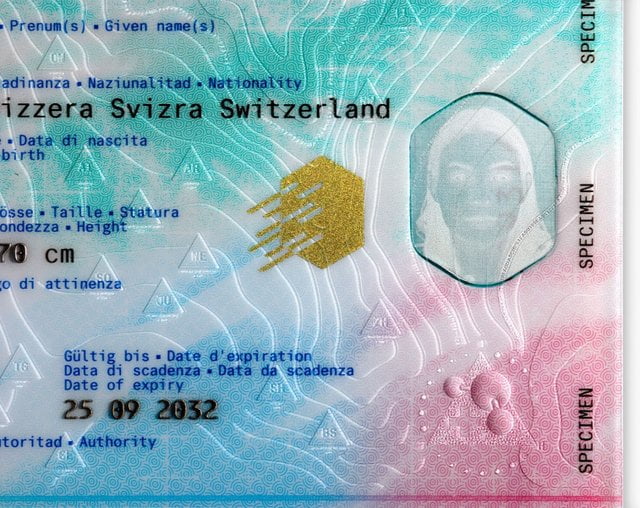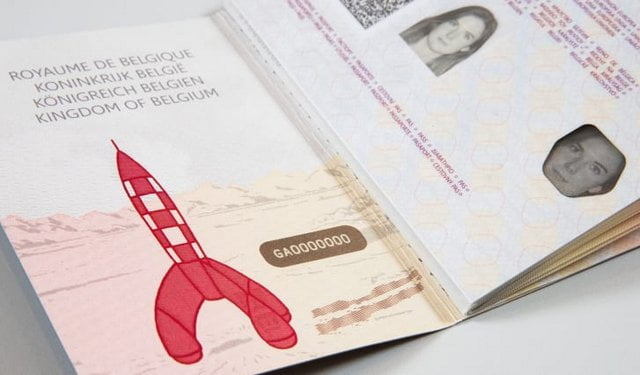Travel in Style: Global Passport Designs Celebrated by Tom Topol
Let me take you on a trip around the world without leaving your couch to admire the unique designs of passports from different countries. Explore the beauty of passport design and security features.
The Man’s Most Traveled Document
Passports are an essential document for global travel, serving as a form of identification and proof of citizenship. Over the years, the design and security features of passports have evolved significantly, reflecting the need for increased protection against forgery and fraud. In this article, we will take a look at the current state of passport design and security, and the factors that have led to these changes.
Technology Shift
One of the biggest changes in recent years has been the shift from paper-based passports to machine-readable biometric passports. These passports contain microchips that store the personal information of the passport holder, including their photograph and biometric data such as fingerprints or iris scans. This has made it much more difficult for forgers to create fake passports, as biometric data is a unique identifier that cannot be easily copied or altered.
Another major development in passport design has been the use of advanced printing and materials. Many countries now use special inks, holograms, and other security features to prevent counterfeiting. For example, some passports feature raised lettering, UV-responsive inks, and microprinting, all of which make it much harder for forgers to recreate the document.
Modern Passport Design
In addition to these technical advancements, many countries have also changed the design of their passports to reflect their cultural identity. For example, the United Kingdom recently unveiled a new passport design that features images of famous British landmarks, while Australia’s passport features a kangaroo and emu, two of the country’s most iconic animals.
Passport Security
However, the increased security features of modern passports come at a cost. Biometric passports are much more expensive to produce than traditional paper-based passports, and the technology required to read the microchips and biometric data is also costly. Some countries have also faced criticism for the way they collect and store biometric data, with concerns over privacy and the potential for data breaches.
Another issue with the current state of passport design and security is that not all countries have adopted the latest technologies. This means that some countries are more vulnerable to forgery and fraud, as their passports may not contain the same level of security as those produced by more technologically advanced nations.
The polycarbonate opportunity is driven by three primary solutions of color-laser personalization. Thales’ Color Laser Shield, IDEMIA’s LASINK, and Veridos’ CLIP ID.
Polycarbonate Data Page
The world of passport technology has undergone a remarkable transformation in recent years. Gone are the days of simple paper-based travel documents, as more than 150 countries have embraced the security and innovation offered by electronic passports with microcontroller chips and polycarbonate (PC) data pages. This trend towards PC data pages has become increasingly popular, with over 40 countries now having upgraded their travel documents to this cutting-edge technology. The first PC data page in a passport was introduced by Finland in 1997.
While the adoption of PC data pages presents its own set of challenges, it is important to acknowledge the numerous benefits it provides. From enhanced security measures to the ability to store more information in a smaller, more durable format, PC data pages have become an essential component of modern passport technology.
It is no secret that the world of travel is constantly evolving, and the passports we use must keep pace with this change. The transition to electronic passports with PC data pages represents a significant step forward in ensuring the safety and security of our travel documents, and it will be exciting to see how this technology continues to develop in the years to come.
Despite these challenges, the trend towards more secure and technologically advanced passports shows no signs of slowing down. With increasing numbers of people traveling internationally, governments are under pressure to ensure the integrity of their passport systems and are investing heavily in new technologies and security features.
Chip And Operating System
To ensure the protection of the chip’s content, various advanced security mechanisms (BAC, SAC, EAC, AA, PA) must be in place. These mechanisms effectively guard against document fraud attempts such as unauthorized access to personal data, duplication, modification of content, or interception of data during scans. In this way, the chip is kept secure and the holder’s private information is kept confidential.
Further Core Security Features
- Flexible and secure customized hinge
- Asymmetric transparent window
- Visible and invisible (UV fluorescent) rainbow printing
- Diffractive optically variable image device (DOVID)
- Tactile and optical lamination features
- Additional color photo positioned on page 3
Passport Design & Security Features Examples
Conclusion
In conclusion, the design and security of passports have come a long way in recent years, reflecting the need for increased protection against forgery and fraud. With advances in biometric technology, printing methods, and materials, passports are now more secure than ever before. While there are still challenges to be addressed, such as the cost and privacy concerns associated with biometric passports, it is clear that the future of passport design and security is bright.
Further reading
The new Swiss passport by RETINAA (abduzeedo.com)
Passports: From Paper to High-Tech Booklet by Tom Topol (passport-collector.com)
FAQ Passport History
Passport collection, passport renewal, old passports for sale, vintage passport, emergency passport renewal, same day passport, passport application, pasaporte passeport паспорт 护照 パスポート جواز سفر पासपोर्ट
1. What are the earliest known examples of passports, and how have they evolved?
The word "passport" came up only in the mid 15th Century. Before that, such documents were safe conducts, recommendations or protection letters. On a practical aspect, the earliest passport I have seen was from the mid 16th Century. Read more...
2. Are there any notable historical figures or personalities whose passports are highly sought after by collectors?
Every collector is doing well to define his collection focus, and yes, there are collectors looking for Celebrity passports and travel documents of historical figures like Winston Churchill, Brothers Grimm, Johann Wolfgang von Goethe. Read more...
3. How did passport designs and security features change throughout different periods in history, and what impact did these changes have on forgery prevention?
"Passports" before the 18th Century had a pure functional character. Security features were, in the best case, a watermark and a wax seal. Forgery, back then, was not an issue like it is nowadays. Only from the 1980s on, security features became a thing. A state-of-the-art passport nowadays has dozens of security features - visible and invisible. Some are known only by the security document printer itself. Read more...
4. What are some of the rarest and most valuable historical passports that have ever been sold or auctioned?
Lou Gehrig, Victor Tsoi, Marilyn Monroe, James Joyce, and Albert Einstein when it comes to the most expensive ones. Read more...
5. How do diplomatic passports differ from regular passports, and what makes them significant to collectors?
Such documents were often held by officials in high ranks, like ambassadors, consuls or special envoys. Furthermore, these travel documents are often frequently traveled. Hence, they hold a tapestry of stamps or visas. Partly from unusual places.
6. Can you provide insights into the stories behind specific historical passports that offer unique insights into past travel and migration trends?
A passport tells the story of its bearer and these stories can be everything - surprising, sad, vivid. Isabella Bird and her travels (1831-1904) or Mary Kingsley, a fearless Lady explorer.
7. What role did passports play during significant historical events, such as wartime travel restrictions or international treaties?
During war, a passport could have been a matter of life or death. Especially, when we are looking into WWII and the Holocaust. And yes, during that time, passports and similar documents were often forged to escape and save lives. Example...
8. How has the emergence of digital passports and biometric identification impacted the world of passport collecting?
Current modern passports having now often a sparkling, flashy design. This has mainly two reasons. 1. Improved security and 2. Displaying a countries' heritage, icons, and important figures or achievements. I can fully understand that those modern documents are wanted, especially by younger collectors.
9. Are there any specialized collections of passports, such as those from a specific country, era, or distinguished individuals?
Yes, the University of Western Sidney Library has e.g. a passport collection of the former prime minister Hon Edward Gough Whitlam and his wife Margaret. They are all diplomatic passports and I had the pleasure to apprise them. I hold e.g. a collection of almost all types of the German Empire passports (only 2 types are still missing). Also, my East German passport collection is quite extensive with pretty rare passport types.
10. Where can passport collectors find reliable resources and reputable sellers to expand their collection and learn more about passport history?
A good start is eBay, Delcampe, flea markets, garage or estate sales. The more significant travel documents you probably find at the classic auction houses. Sometimes I also offer documents from my archive/collection. See offers... As you are already here, you surely found a great source on the topic 😉
Other great sources are: Scottish Passports, The Nansen passport, The secret lives of diplomatic couriers
11. Is vintage passport collecting legal? What are the regulations and considerations collectors should know when acquiring historical passports?
First, it's important to stress that each country has its own laws when it comes to passports. Collecting old vintage passports for historical or educational reasons is safe and legal, or at least tolerated. More details on the legal aspects are here...
Does this article spark your curiosity about passport collecting and the history of passports? With this valuable information, you have a good basis to start your own passport collection.
Question? Contact me...





